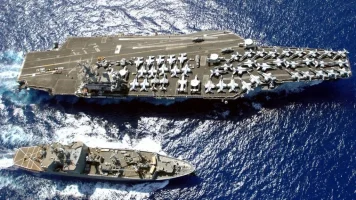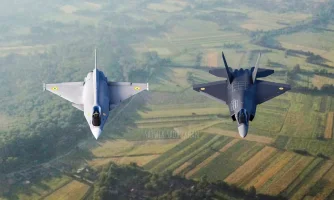- Views: 2K
- Replies: 5

The Indian Navy is charting its course for carrier-based fighter aircraft operations, with a plan to rely on its existing MiG-29K fleet until the indigenous Twin Engine Deck-Based Fighter (TEDBF) enters service around 2035. This strategy reflects the Navy's commitment to maintaining operational readiness while bridging the gap to the next generation of indigenous carrier-based fighters.
The MiG-29K, a naval variant of the Russian-origin MiG-29, currently forms the backbone of the Indian Navy's air wing. Operating from INS Vikramaditya and the newly commissioned INS Vikrant, these aircraft play a vital role in fleet defense, air superiority, and strike missions. While the MiG-29K has faced criticism over maintenance issues and reliability concerns, the Navy has implemented measures to improve the fleet's availability and performance.
To ensure the MiG-29K fleet remains operationally viable for the next decade, the Indian Navy is exploring upgrades focused on avionics, radar systems, and weapons integration. These improvements aim to address existing shortcomings and extend the aircraft's service life until it can be gradually replaced by the TEDBF.
The TEDBF, developed by the Aeronautical Development Agency (ADA) and Hindustan Aeronautics Limited (HAL), is a 4.5-generation indigenous fighter designed specifically for aircraft carrier operations. With advanced stealth features, superior avionics, and multi-role capabilities, it is expected to fulfill the Navy's long-term requirements for a modern and reliable deck-based fighter.
The TEDBF is slated to make its first flight in 2028, with operational induction anticipated by 2035. This timeline aligns with the planned phased retirement of the MiG-29K fleet.
By upgrading its existing MiG-29K fleet and investing in the development of the indigenous TEDBF, the Indian Navy is demonstrating a balanced approach to maintaining its naval aviation capabilities. This strategy ensures operational readiness in the near term while paving the way for a future with advanced, indigenously-developed carrier-based fighter aircraft.


